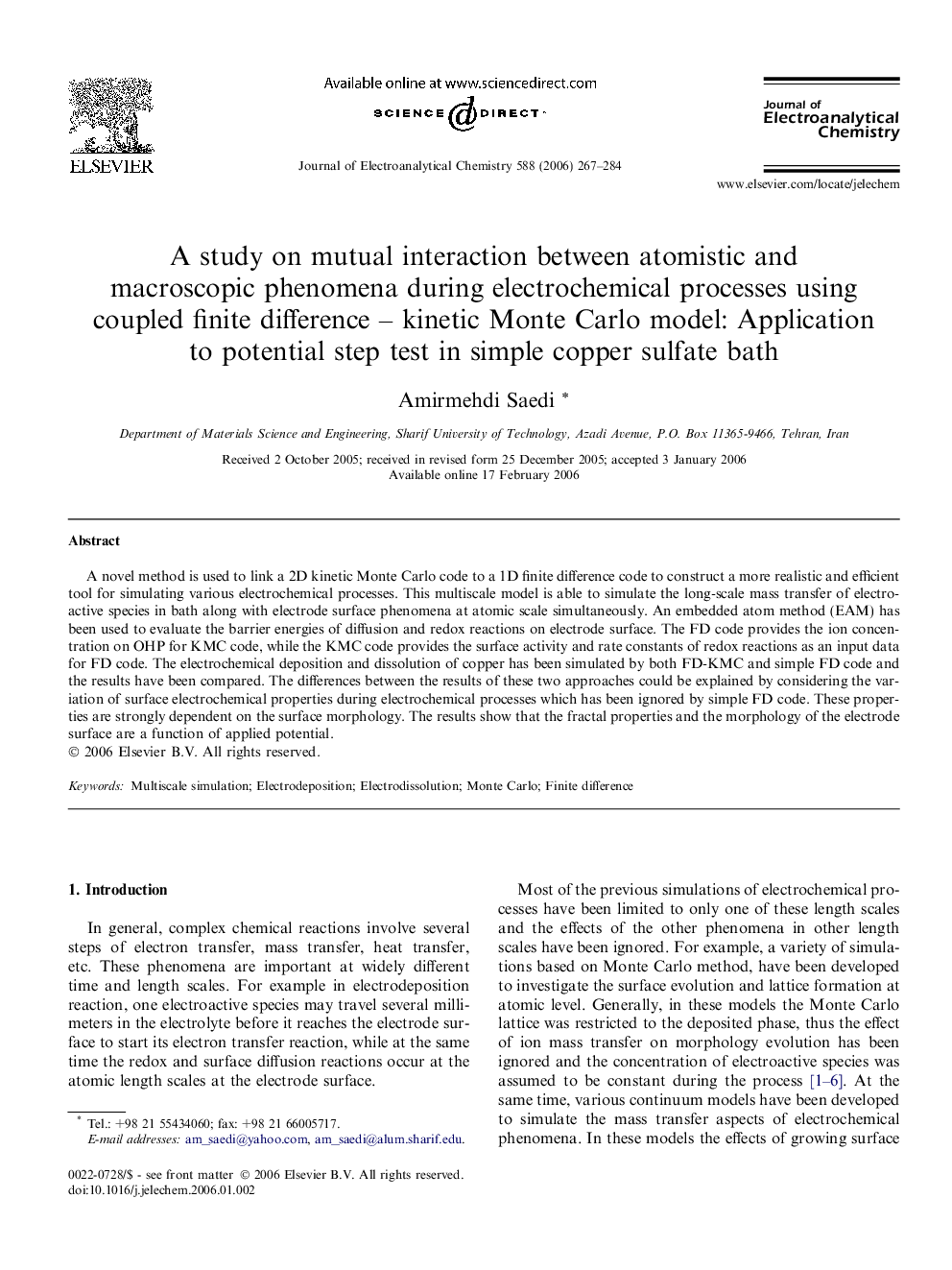| Article ID | Journal | Published Year | Pages | File Type |
|---|---|---|---|---|
| 221415 | Journal of Electroanalytical Chemistry | 2006 | 18 Pages |
A novel method is used to link a 2D kinetic Monte Carlo code to a 1D finite difference code to construct a more realistic and efficient tool for simulating various electrochemical processes. This multiscale model is able to simulate the long-scale mass transfer of electroactive species in bath along with electrode surface phenomena at atomic scale simultaneously. An embedded atom method (EAM) has been used to evaluate the barrier energies of diffusion and redox reactions on electrode surface. The FD code provides the ion concentration on OHP for KMC code, while the KMC code provides the surface activity and rate constants of redox reactions as an input data for FD code. The electrochemical deposition and dissolution of copper has been simulated by both FD-KMC and simple FD code and the results have been compared. The differences between the results of these two approaches could be explained by considering the variation of surface electrochemical properties during electrochemical processes which has been ignored by simple FD code. These properties are strongly dependent on the surface morphology. The results show that the fractal properties and the morphology of the electrode surface are a function of applied potential.
